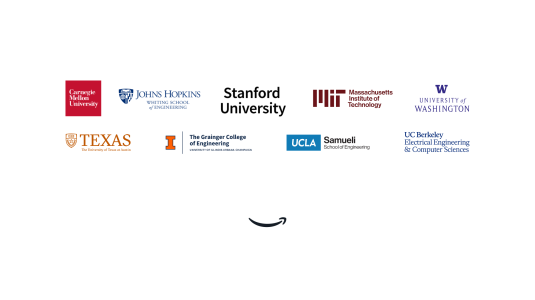How do molecules come together and start to behave like a living system? This is the type of question that drives Garegin Papoian’s research. At the University of Maryland, where he is the Monroe Martin Professor, he has been focusing on computational modeling of biological molecules like proteins and DNA. Within his Papoian Lab, a theoretical physical chemistry group also located at the university, his team is also working toward developing fundamental molecular models of the whole cell, a concept still in its infancy.
Papoian’s path into science was determined early on. Growing up in Armenia, then a part of the Soviet Union, he went to a special school of physics and mathematics, where he was introduced to Science Olympiads. While in high school, he won the first place in the Republic of Armenia in separate Olympiads in chemistry, physics, mathematics and biology. “Science Olympiads were a big reason why I got drawn into science, in particular to chemistry and physics”, he says.
Because of his success in the competitions, he was invited to study at an advanced chemistry college in Moscow established specifically for Olympiad winners.
“I was 16,” he says, “but it was assumed that we already knew all university level chemistry. So, they would start immediately with a very high-level training.” The program included an internship in the United States, at the University of Kansas. From there he eventually enrolled as a graduate student at Cornell University, where he pursued his PhD in quantum chemistry, working under the Nobel Laureate, Roald Hoffmann.
During his postdoc, he turned to classical physics with a particular emphasis on biophysics. “I was interested in bringing concepts of physical chemistry to understand biological phenomena from the molecular perspective,” he says. “And my long-term career goal is to develop concepts both for proteins and cells.”
Predicting a protein’s shape
A protein is a large molecule essential to all living things. The sequence of amino acids that form a protein determines its three-dimensional structure. Each protein has a unique shape that dictates its function. Being able to predict what a protein structure looks like from its amino acid sequence has been a long-standing scientific challenge and one of the research interests of Papoian’s group, for which he received an AWS Machine Learning Research Award in 2018.

One of the applications of protein structure prediction is drug design. “When you design a drug, you need to know what the target looks like,” says Papoian. If you know that the target protein has a certain pocket, for example, you can develop a molecule that will fit nicely into that pocket. While identifying genes associated with diseases has become easier, the sequence of a gene doesn’t tell you what the protein expressed by it looks like, and experimental methods to determine the protein shape are lengthy and expensive.
IDPs ... are more like this crazy spaghetti. It's very hard to deal with them both experimentally and computationally.
Even in the wake of DeepMind demonstrating that AlphaFold is capable of predicting protein structures with an unprecedented level of accuracy, challenges still remain.
It turns out that a large proportion of human proteins are not completely structured in neat three-dimensional shapes. These are called the intrinsically disordered proteins (IDPs). “They are much more dynamic and mostly never fall into a single structure,” says Papoian. “They are more like this crazy spaghetti. It's very hard to deal with them both experimentally and computationally because they are so elusive.” He notes that about a third of human proteins are like that, including many important disease-causing proteins.
Papoian’s AWS Machine Learning Research Award enabled his team to advance the development of a system that is better suited to simulating these proteins.
Tackling disordered proteins
For the past few years, Papoian Lab has been working with a protein modeling framework called AWSEM-MD (pronounces “awesome”), which stands for associative memory, water-mediated, structure and energy model — molecular dynamics. It has been developed jointly with Peter Wolynes, Papoian’s former postdoctoral advisor who is currently at Rice University and with whom he continued to collaborate over the years.
Using the AWS Machine Learning Research Award, Papoian and his colleagues developed AWSEM-IDP, an AWSEM branch specifically designed to simulate intrinsically disordered proteins.
This system uses a database of protein fragment structures obtained experimentally, for example, through nuclear magnetic resonance (NMR) spectroscopy — a technique that determines the structure and dynamics of proteins. "These fragments serve as structural memories that guide the IDP to undergo structural transformations that are informed by the experiment,” Papoian explains. “This allows simulating more realistic IDP dynamics.”
The fragment database may also contain structures from atomistic simulations — a type of simulation where every atom of a protein is present. “The reason why we prefer not to do those in general is that they’re very expensive, so we cannot do very big simulations. But we can do atomistic simulations of short fragments to give us good fragment memories, again improving the accuracy of IDP’s structural exploration in AWSEM simulations,” he says.
An IDP will prefer multiple structures, not just one.
“That's the key difference from regular proteins: IDPs are multi-faceted in essence. But they still prefer certain structures over others. And the AWSEM-IDP model allows you to correctly describe those preferences,” Papoian explained. This model was described in a 2018 article published at the Journal of Physical Chemistry B.
In another work published earlier this year that was supported by the AWS Machine Learning Award, Papoian and his colleagues applied AWSEM-IDP to study a protein called linker histone H1, which plays an essential role in regulating many important biological processes. This protein has two intrinsically disordered regions, parts of its structure that are not well folded and resemble two tails. Because they are disordered, it’s much harder to understand what they do and how they interact.
Proteins like linker histone H1 regulate histone complexes, which act like a spool around which the DNA wraps to create structures called nucleosomes. “In this paper, we used AWSEM-IDP to model the nucleosome with linker histone H1, in particular with these disordered tails. And that allowed us to understand how the linker histone and the nucleosome come together and interact, and what's the role of these disordered tails,” says Papoian. Understanding proteins’ interactions with nucleosomes may give important insights on epigenetics, which is one of Papoian Lab’s interests.
Future challenges
Because making sense of IDPs is such a difficult process, Papoian says that AWSEM-IDP is an ongoing program with room for improvement. “What we have currently works better in some classes of proteins, and not so much in others. So next we’ll explore what are the challenges for what we currently have in ASWEM-IDP and try to come up with new advances to overcome them.”
In addition to IDPs, Papoian Lab will also continue to pursue the use of deep learning for structure prediction of well-folded proteins. Although there is some conceptual overlap with AlphaFold, Papoian believes that AWSEM-MD is a powerful tool and has advantages to other approaches when it comes to molecular dynamics.
Proteins are not frozen objects. Some of them are well structured, but many are not structured at all, and they are dynamic and move and shape-shift incessantly.
“Proteins are not frozen objects,” he says. “Some of them are well structured, but many are not structured at all, and they are dynamic and move and shape-shift incessantly. So, to understand how these proteins function, you must model their dynamics and that’s what AWSEM-MD can do best.”
Papoian thinks one exciting area to be explored in coming decades will be combining machine learning and physics to work on protein structure prediction, protein dynamics, multiprotein complexes, and epigenetics.
“There are lots of things that still remain to be understood in our models. And I think that probably neither physics nor machine learning by themselves can tackle them. But a program that brings them together in a productive way can be very powerful,” he said.
Modeling an entire cell
Another ambitious project that Papoian and his colleagues are pursuing is to develop a computational model of an entire cell. “We still don’t have a blueprint of a cell the way we have a blueprint of a car or a Boeing airplane.”
To do that, his group develops their own software from scratch.
“We basically do the science, the physics, and biophysics of what is needed to model our cells. We derive the needed algorithms from scratch based on the laws of physics and chemistry and then we program that into a computer and run simulations on a supercomputer,” he explained. This has to be done at a single molecule resolution, he adds, meaning that they have to track every single molecule within a cell.
To achieve that, the Papoian Lab developed a model called MEDYAN.
“We can already model some number of proteins, the membrane, we can model rich chemistry. We have developed some of the fundamental chemistry and physics components of what needs to be done,” he says. The next step is to scale it. “We usually do simulations with several types of proteins. So instead of several, you will need maybe hundreds or thousands of different types of proteins, so it just brings more complexity.”
When that happens, it will be a huge revolution in biomedicine, he says. “Then lots of things that people laboriously spend years doing in the laboratory could just run on AWS servers. And you could do your experiments and search for treatments computationally, which would be much cheaper and faster.”


















